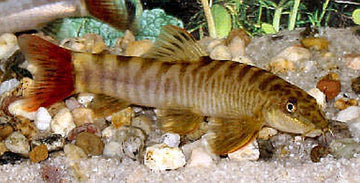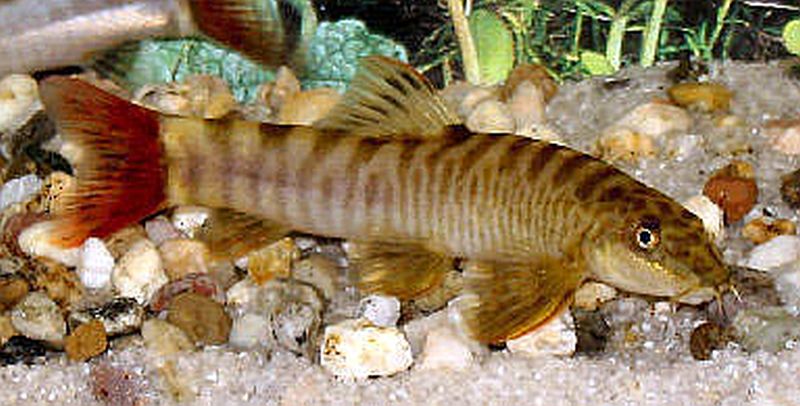Schistura fasciolatus – Red‑Tail Bumble Bee Loach (~6 cm)
-
Estimated Delivery:Nov 15 - Nov 19
-
UPS Next Day Air Shipping Charges 65$

Schistura fasciolatus – Red‑Tail Bumble Bee Loach (~6 cm)
📦 Description
Schistura fasciolatus—commonly known as the Red‑Tail Bumble Bee Loach—is a compact stone loach native to fast-flowing streams in China and northern Vietnam. It reaches up to about 6 cm in length. The body displays alternating dark bands on a pale background, often with a bright red or orange tail fin. This active, bottom-dwelling species grazes on small invertebrates and algae from rocks and substrate. It’s relatively shy and thrives best in mature, well-oxygenated aquaria with strong current.
🧰 Care Instructions
-
Tank Size: Minimum 20 g (~75 L), though larger shallow setups suit them best.
-
Water Flow & Filtration: Moderate to strong unidirectional current (~4–5× turnover) and high oxygenation essential.
-
Water Conditions:
-
Temperature: 65–75 °F (18–24 °C)
-
pH: 6.5–7.5
-
Hardness: Soft to moderately hard (approx. 2–12 °dGH)
-
-
Substrate & Decor: Fine gravel or sand with smooth stones and driftwood. Provide ample hiding spots under rocks or logs; these loaches are secretive and benefit from broken sightlines.
-
Diet: Omnivorous. In the wild they feed on aquatic insects, larvae, crustaceans, and detritus. In captivity offer a varied diet—live/frozen foods (e.g. bloodworms, daphnia), sinking pellets, and algae wafers. Ensure sufficient feeding paths due to flowing water.
-
Social Behavior: Best kept in groups of 6 or more to minimize stress and spreading territorial interaction. They often remain hidden unless comfortable.
-
Maintenance: Requires spotless water and mature tanks. Weekly partial water changes of 30–50%, excellent filtration, and preserving biofilm/grazing surfaces help ensure health. Avoid over-cleaning.

